
canon fl lens manual
Welcome to the Canon FL Lens Manual. This guide provides essential information to help you understand and utilize your Canon FL lens effectively for optimal photography results.
1.1 Overview of Canon FL Lenses
Canon FL lenses are a series of interchangeable lenses designed for Canon film and select digital cameras. Known for their simplicity and optical excellence‚ these lenses offer versatility for various photography needs. They feature manual focus operation and aperture control‚ appealing to photographers who value precision and creative control. FL lenses are compatible with Canon’s FL-mount cameras and are renowned for their durable construction and consistent image quality. Whether for portraits‚ landscapes‚ or street photography‚ FL lenses provide a reliable and high-quality option for capturing stunning images with timeless appeal.
1.2 Importance of Understanding the Manual
Understanding the Canon FL Lens Manual is crucial for unlocking the full potential of your lens. It provides detailed insights into the lens’s features‚ operation‚ and maintenance‚ ensuring optimal performance. By familiarizing yourself with the manual‚ you can master manual focusing‚ aperture control‚ and exposure settings. This knowledge enables you to troubleshoot common issues and maintain the lens properly. Whether you’re a professional or an enthusiast‚ understanding the manual empowers you to make the most of your photography tools. It serves as a comprehensive guide to achieving consistent and high-quality results with your Canon FL lens.
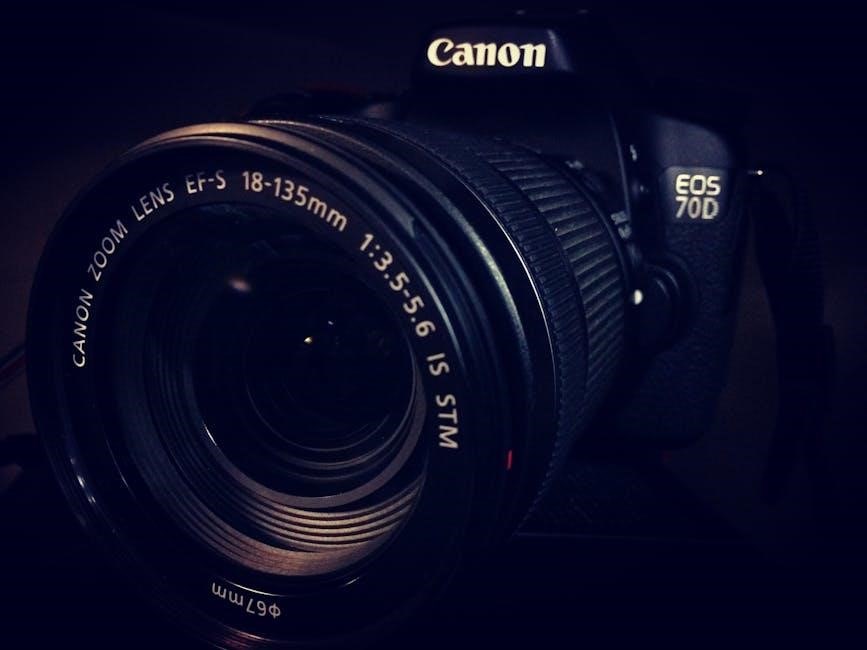
Key Features of Canon FL Lenses
Canon FL lenses are renowned for their exceptional optical design‚ versatile aperture range‚ precise focusing mechanisms‚ and compatibility with various camera systems‚ making them a trusted choice among photographers.
2.1 Optical Design and Construction
Canon FL lenses feature high-quality glass elements designed to minimize distortions and chromatic aberrations‚ ensuring sharp and vibrant images. The multi-coated lenses reduce flare and enhance contrast‚ while the robust mechanical design provides durability. Weather-sealed constructions protect against environmental factors‚ ensuring reliability in various conditions. Each lens is crafted to balance optical performance with portability‚ making them ideal for photographers seeking precision and versatility. The attention to detail in their construction reflects Canon’s commitment to delivering exceptional imaging tools for both professionals and enthusiasts.
2.2 Aperture and F-Stop Range
Canon FL lenses offer a wide range of aperture settings‚ enabling precise control over light intake and depth of field. The aperture‚ measured in f-stops‚ determines the lens opening size. A smaller f-stop value (e.g.‚ f/1.4) means a larger aperture‚ allowing more light and a shallower depth of field‚ while a larger f-stop (e.g.‚ f/16) results in a smaller aperture‚ less light‚ and a deeper focus. FL lenses typically feature apertures ranging from f/1.2 to f/32‚ providing flexibility for various lighting conditions and creative effects. This range allows photographers to achieve desired visual outcomes‚ from blurred backgrounds to sharp landscapes.
2.3 Focusing Mechanism
Canon FL lenses feature a manual focusing mechanism designed for precise control. The focus ring is constructed for smooth operation‚ allowing photographers to adjust the focal point accurately. The mechanism is typically gear-driven‚ ensuring consistent and exact focus adjustments. FL lenses often incorporate a focusing scale with distance markings‚ aiding in pre-focusing and zone focusing techniques. The manual focus design emphasizes tactile feedback‚ enabling photographers to achieve sharp results. This mechanism is particularly useful for creative control‚ allowing for deliberate focus placement and depth of field management. Regular maintenance ensures the focusing mechanism remains smooth and responsive over time.
2.4 Lens Mount and Compatibility
Canon FL lenses utilize the FL mount system‚ designed for compatibility with specific Canon cameras. These lenses are primarily compatible with Canon’s manual focus cameras‚ such as the Canon FX and FP models. The FL mount ensures a secure and precise connection between the lens and camera body‚ maintaining optical alignment for sharp images. While FL lenses are not natively compatible with modern EOS cameras‚ adapters can enable mounting on newer bodies. This versatility allows photographers to continue using their FL lenses with updated equipment‚ preserving their optical quality and creative potential across generations of cameras.
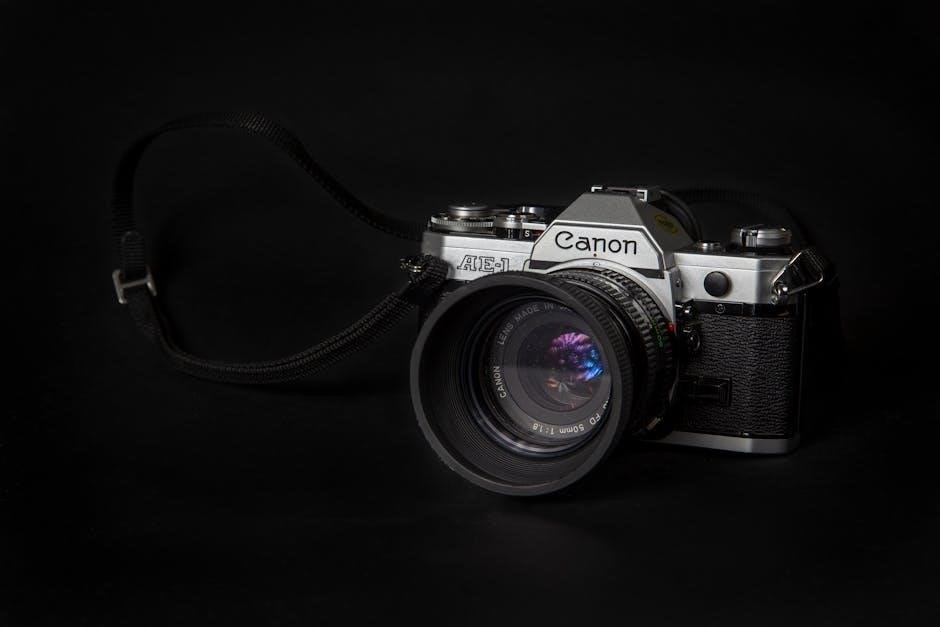
Types of Canon FL Lenses
Canon FL lenses are available in various focal lengths and types‚ offering versatility for different photography needs. They cater to wide-angle‚ standard‚ and telephoto applications‚ ensuring compatibility with manual focus cameras while delivering high-quality results for both professionals and hobbyists.
3.1 Wide-Angle FL Lenses
Wide-angle FL lenses are ideal for capturing broad scenes‚ offering a wider field of view compared to standard lenses. With focal lengths typically ranging from 20mm to 35mm‚ these lenses are perfect for landscapes‚ interiors‚ and group portraits. Their design allows for a larger depth of field‚ keeping more of the image in focus‚ which is beneficial for sharp and detailed photography. Additionally‚ wide-angle FL lenses often feature manual focusing‚ enabling precise control over focus points. They are a versatile choice for photographers seeking to emphasize spatial relationships and create dynamic compositions in their work.
3.2 Standard FL Lenses
Standard FL lenses‚ typically ranging from 50mm to 58mm‚ are designed to closely match the human eye’s perspective. They are versatile and ideal for everyday photography‚ portraits‚ and street scenes. Their optical design ensures sharpness and clarity‚ making them suitable for capturing detailed images. Many standard FL lenses feature a large aperture‚ such as f/1.8‚ allowing for excellent low-light performance and shallow depth of field. These lenses also often include manual focusing‚ providing precise control over focus points. Their compact size and lightweight construction make them easy to carry‚ offering a practical choice for photographers seeking a balance between performance and portability.
3.3 Telephoto FL Lenses
Telephoto FL lenses‚ typically ranging from 85mm to 200mm or more‚ are designed for capturing distant subjects with precision and clarity. These lenses excel in wildlife‚ sports‚ and portrait photography‚ offering a compressed perspective that isolates subjects from their backgrounds. With manual focusing‚ they allow photographers to achieve sharp focus on distant or moving subjects; Telephoto FL lenses often feature advanced optical designs‚ including multiple elements‚ to minimize distortions and chromatic aberrations. Their compact and durable construction ensures reliability in various shooting conditions‚ making them a valuable addition to any photographer’s kit for capturing high-quality images at greater distances.
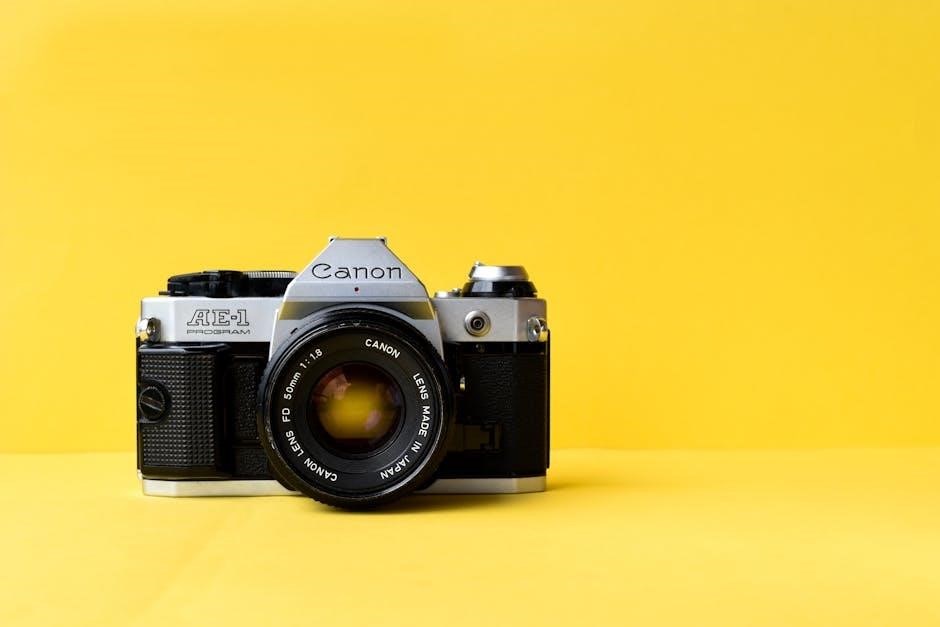
Setting Up Your Canon FL Lens
Setting up your Canon FL lens involves unboxing‚ inspecting for damage‚ and familiarizing yourself with its controls. Ensure proper handling to maintain optical quality and functionality.
4.1 Mounting the Lens on the Camera
- Align the lens mount with the camera body‚ ensuring the white dot on the lens matches the camera’s mounting index.
- Gently turn the lens clockwise until it clicks into place‚ securing it firmly.
- Verify the lens is properly seated by checking the connection and ensuring no play or looseness.
- Make sure the electronic contacts are clean and aligned for proper communication between the lens and camera.
- Once mounted‚ test the lens by taking a few images to ensure it’s functioning correctly.
4.2 Understanding the Lens Controls
The Canon FL lens features intuitive controls designed for precise operation. The focusing ring allows manual adjustment of focus‚ while the aperture ring controls the f-stop setting. Located on the lens barrel‚ these controls enable quick adjustments during shooting. The focusing ring typically rotates smoothly‚ providing tactile feedback for accurate focus acquisition. The aperture ring clicks at each f-stop value‚ ensuring precise control over light entry. Familiarize yourself with these controls to optimize your shooting experience and achieve desired results in various photographic scenarios.
4.3 Setting the Aperture and Shutter Speed
Setting the aperture and shutter speed is crucial for achieving the desired exposure. The aperture is adjusted using the aperture ring on the lens‚ while the shutter speed is set using the camera’s shutter speed dial. Together‚ they control the amount of light entering the camera. A smaller aperture (higher f-stop) and faster shutter speed reduce light‚ while a larger aperture (lower f-stop) and slower shutter speed increase it. Use the camera’s built-in light meter for guidance. Experiment with these settings to balance creative vision with technical requirements‚ ensuring properly exposed images in various lighting conditions.

Focusing Techniques with FL Lenses
Mastering focusing techniques with FL lenses enhances image clarity and creativity. Learn manual focus precision‚ viewfinder techniques‚ and tips for achieving sharp‚ professional-quality photos consistently.
5.1 Manual Focusing Basics
Manual focusing with Canon FL lenses requires precision and practice. Locate the focus ring‚ typically wide and textured for grip. Rotate it smoothly‚ using the viewfinder to ensure sharpness. Focus on high-contrast areas for accuracy. Use the lens’s depth-of-field scale to estimate focus range. In low light‚ use a bright viewfinder or magnifier for clarity. Practice focusing on stationary and moving subjects to develop muscle memory. Consistent practice enhances your ability to achieve sharp‚ well-focused images consistently. This fundamental skill is key to unlocking the full potential of your FL lens.
5.2 Using the Viewfinder for Accurate Focus
To achieve precise focus‚ use the camera’s viewfinder. Adjust the diopter to match your vision for a sharp display. Align the subject within the microprism or split-image prism for quick focus confirmation. Ensure the subject covers the active AF point or focusing screen. In manual mode‚ turn the focus ring while observing the viewfinder. For stationary subjects‚ focus on high-contrast areas. For moving subjects‚ anticipate their movement and pre-focus. Use the depth-of-field preview button to check focus range. A steady hand and proper technique ensure sharp images. Practice these methods to master accurate focus with your FL lens.
5.3 Tips for Sharp Images
Ensure sharp images by using the lens’s sweet spot‚ typically between f/5.6 and f/8. Use a tripod for stability‚ especially in low light. Enable manual focus for precise control and avoid fast shutter speeds that may introduce blur. Pre-focus on stationary subjects and anticipate movement for dynamic shots. Use the depth-of-field preview button to confirm focus range. Clean the lens regularly to avoid smudges affecting clarity. Shoot in RAW for better post-processing control. Pay attention to the subject’s eyes for portrait sharpness. Avoid overstepping the lens’s capabilities in extreme conditions. Practice these techniques to consistently capture sharp‚ professional-quality images with your Canon FL lens.
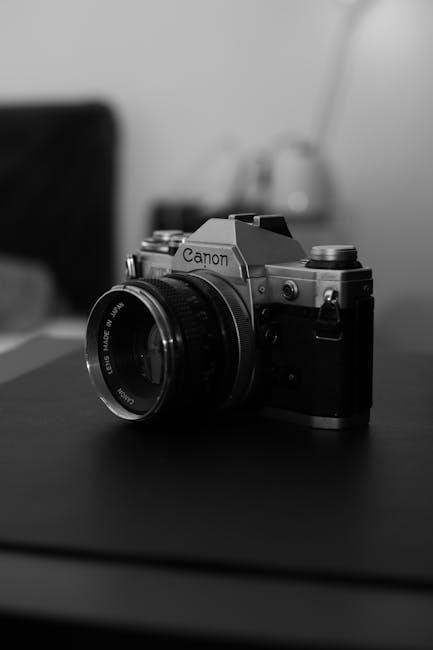
Exposure Control with FL Lenses
Exposure control with Canon FL lenses involves mastering aperture‚ shutter speed‚ and ISO to capture well-balanced images. Understanding these elements is crucial for achieving optimal results in various lighting conditions.
6.1 Understanding Exposure Compensation
Exposure compensation allows you to adjust the camera’s automatic settings to achieve the desired brightness in your images. It is essential for capturing scenes with challenging lighting conditions‚ such as backlighting or high contrast. By using the exposure compensation dial‚ you can either overexpose or underexpose an image to balance the lighting. This feature is particularly useful when the camera’s light meter is fooled by bright or dark areas in the frame. Understanding how to apply exposure compensation ensures your photos reflect your creative vision accurately‚ whether you’re shooting in bright sunlight or low-light environments.
6.2 Using the Light Meter
The light meter is a crucial tool for achieving accurate exposure. It measures the intensity of light in a scene‚ helping you set the correct aperture and shutter speed. Built-in light meters in Canon FL lenses provide readings based on the amount of light entering the camera. To use the light meter effectively‚ ensure the lens is properly mounted and the aperture is set correctly. The meter will guide you to adjust settings for optimal exposure. For precise measurements‚ handheld light meters or smartphone apps can supplement the built-in meter‚ especially in complex lighting scenarios.
6.3 Adjusting for Different Lighting Conditions
Different lighting conditions require adjustments to achieve optimal results. In bright sunlight‚ use a smaller aperture or a neutral density filter to prevent overexposure. In low-light situations‚ open the aperture or extend the shutter speed to capture more light. Overcast skies may require adjusting white balance for accurate colors. Backlit scenes benefit from using fill flash or adjusting exposure compensation. Always review your images and tweak settings as needed to ensure proper exposure and color accuracy in varying lighting environments. Practice makes perfect in mastering these adjustments for professional-quality photos.
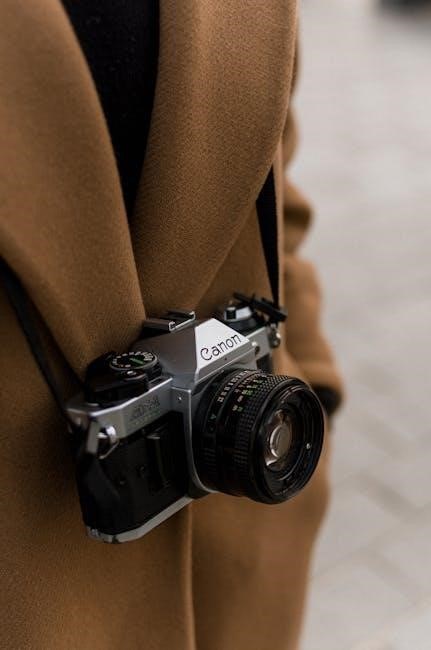
Advanced Techniques with FL Lenses
Explore advanced techniques for Canon FL lenses‚ enhancing your photography skills. Master depth of field‚ bokeh‚ and low-light shooting to create stunning‚ professional-quality images effortlessly.
7.1 Depth of Field Control
Depth of field control is crucial for creative photography. Canon FL lenses allow precise adjustment of in-focus areas using aperture settings. A larger aperture (smaller f-stop) creates a shallow depth of field‚ blurring backgrounds‚ while a smaller aperture (larger f-stop) keeps more of the image sharp. experiment with these settings to isolate subjects or capture detailed landscapes. the manual focusing mechanism on FL lenses provides tactile control‚ enabling photographers to fine-tune focus for optimal results. understanding and mastering this technique enhances compositional versatility and storytelling in your images.
7.2 Bokeh and Background Blur
Bokeh refers to the aesthetic quality of out-of-focus areas in an image. Canon FL lenses produce smooth‚ creamy bokeh‚ enhancing subject isolation. To achieve pleasing background blur‚ use a wide aperture (like f/2 or f/1.8) and position your subject away from the background. The lens’s optical design‚ including the number of aperture blades‚ influences bokeh quality. Experiment with different aperture settings to balance sharpness and blur. Properly using bokeh can elevate your portraits and creative compositions‚ making your subject stand out while maintaining a natural‚ professional look in your photographs.
7.3 Low-Light Photography
Canon FL lenses excel in low-light conditions due to their wide aperture range. Use the largest aperture (smallest f-stop number) to allow more light into the camera. Keep ISO settings low to minimize noise‚ and use a tripod or monopod for stability. If your lens lacks image stabilization‚ shoot in shorter exposures or use manual focus for precision. Utilize the camera’s metering modes to balance exposure. For consistent results‚ experiment with different techniques and lighting setups. Always review your shots and adjust settings as needed to capture sharp‚ well-lit images in challenging lighting environments;
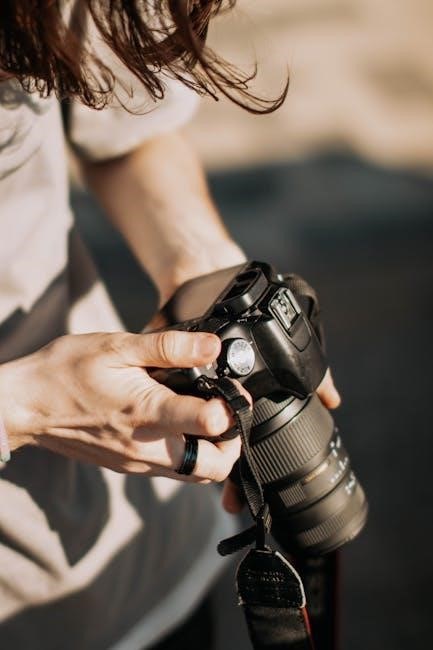
Maintenance and Care of FL Lenses
Regularly clean your Canon FL lens with a soft cloth to prevent dust buildup. Store it in a dry‚ cool place‚ using lens caps to protect from scratches and damage.
8.1 Cleaning the Lens
Cleaning your Canon FL lens is essential for maintaining image quality. Use a soft‚ dry microfiber cloth to gently wipe away dust or smudges. For stubborn spots‚ apply a few drops of lens cleaning solution to the cloth‚ not directly to the lens. Avoid using tissues or paper products‚ as they may scratch the glass. Regular cleaning prevents dust buildup and ensures sharp‚ clear images. Always store the lens with caps to minimize exposure to dust and moisture. Cleaning should be done carefully to preserve the lens’s optical integrity and longevity.
8.2 Storing the Lens Properly
Proper storage is crucial to maintain the condition of your Canon FL lens. Always use the provided lens caps to protect the front and rear elements from dust and scratches. Store the lens in a dry‚ cool place away from direct sunlight and moisture. Avoid extreme temperatures‚ as they can damage the lens’s optical or mechanical components. Consider using a protective case or pouch for added safety. When not in use‚ keep the lens in a camera bag with padding to prevent accidental damage. Proper storage ensures your lens remains in optimal condition for years of reliable performance.
8.3 Handling Common Maintenance Issues
Regular maintenance ensures your Canon FL lens performs at its best. Common issues include dust‚ fungus‚ and mechanical wear. For fungus‚ clean the lens with a soft brush and store it in a dry environment with silica gel. Minor scratches on the front element can often be ignored‚ but deep scratches require professional repair. Lubricate mechanical parts with a silicone-based spray if they become stiff. Avoid using harsh chemicals or abrasive materials‚ as they can damage the lens coating or internal components. Addressing these issues promptly ensures your lens remains in optimal condition for years of reliable use.
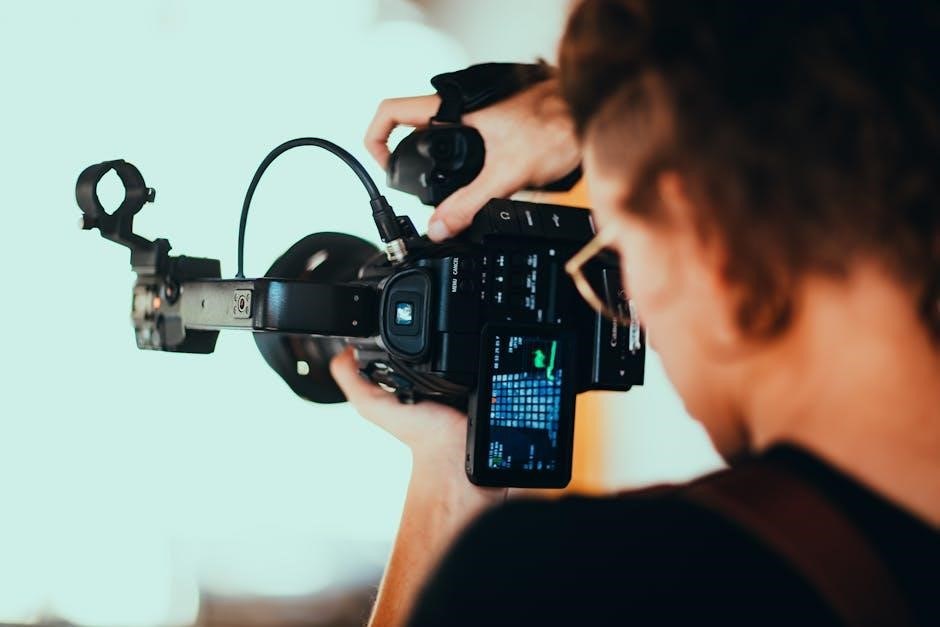
Troubleshooting Common Issues
This section addresses common issues you may encounter with your Canon FL lens‚ providing practical advice and solutions to ensure optimal performance and photography results.
9.1 Resolving Focusing Problems
Focusing issues with your Canon FL lens can lead to blurry images or inaccurate focus. Start by ensuring the lens is clean and free from debris. Check the camera body for proper alignment and functionality. Use the depth-of-field preview to confirm focus accuracy. If autofocus is slow or inconsistent‚ consider recalibrating the lens or consulting a professional. Regular maintenance and proper handling can prevent focusing problems. Addressing these issues promptly ensures sharp and clear images‚ maximizing your lens’s performance and your photography experience.
9.2 Dealing with Lens Damage
If your Canon FL lens suffers damage‚ inspect it immediately for scratches‚ cracks‚ or misalignment. Avoid using a damaged lens‚ as it may harm the camera or degrade image quality. Clean gently to remove debris‚ but avoid touching optical surfaces. Store the lens in a protective case to prevent further damage. For severe issues‚ consult a professional for repairs. DIY repairs can worsen the problem. Regular maintenance and careful handling are key to preventing lens damage. Addressing damage promptly ensures your lens continues to deliver exceptional performance and maintains its value as a precision photography tool.
9.3 Addressing Aperture Malfunctions
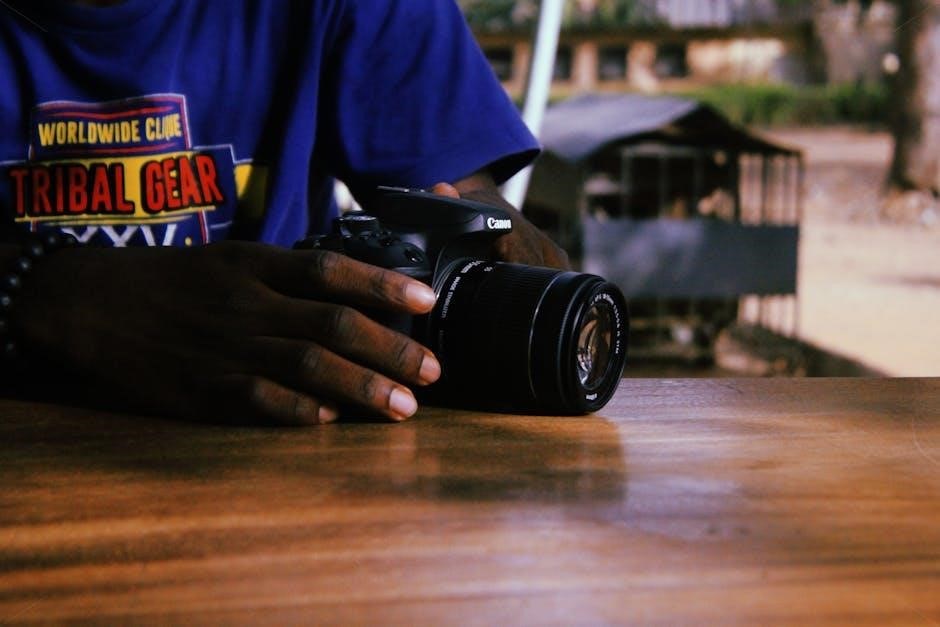
If your Canon FL lens experiences aperture malfunctions‚ such as the aperture blades sticking or failing to stop down‚ inspect for dirt or oil residue. Clean the aperture blades gently with a soft brush or cotton swab. Ensure the lens is mounted securely on the camera and that the aperture control is functioning correctly. If issues persist‚ consult a professional for repair. Avoid forcing the aperture mechanism‚ as this may cause further damage. Regular maintenance‚ such as cleaning and proper storage‚ can help prevent malfunctions. Addressing aperture issues promptly ensures consistent performance and image quality with your Canon FL lens.
Mastering your Canon FL lens enhances your photography experience. Practice and explore its capabilities to capture stunning images. Thank you for reading this comprehensive guide!
10.1 Summary of Key Points
This manual has covered essential aspects of Canon FL lenses‚ from their optical design to advanced techniques and maintenance. Understanding the lens’s features‚ such as aperture control‚ focusing mechanisms‚ and compatibility‚ is crucial for optimal performance. Mastering exposure‚ depth of field‚ and low-light photography enhances your creative control. Regular maintenance ensures longevity and image quality. Troubleshooting common issues helps you address problems effectively. By following these guidelines‚ you can unlock the full potential of your Canon FL lens and achieve professional-grade results in various photography scenarios. Keep practicing to refine your skills and explore new creative possibilities.
10.2 Final Tips for Using FL Lenses
Experiment with different apertures to master depth of field. Practice manual focusing for precise control. Use a tripod for stability in low light. Explore various genres to familiarize yourself with the lens’s capabilities. Regularly clean and maintain your lens for optimal performance. Always use a lens cap to protect the glass. Keep the lens firmware updated for compatibility. Push creative boundaries by trying new techniques. Remember‚ practice is key to unlocking your FL lens’s full potential. Enjoy the journey of capturing stunning images with your Canon FL lens.
Related posts:
Archives
Calendar
| M | T | W | T | F | S | S |
|---|---|---|---|---|---|---|
| 1 | 2 | 3 | 4 | 5 | 6 | 7 |
| 8 | 9 | 10 | 11 | 12 | 13 | 14 |
| 15 | 16 | 17 | 18 | 19 | 20 | 21 |
| 22 | 23 | 24 | 25 | 26 | 27 | 28 |
| 29 | 30 | 31 | ||||
Leave a Reply
You must be logged in to post a comment.